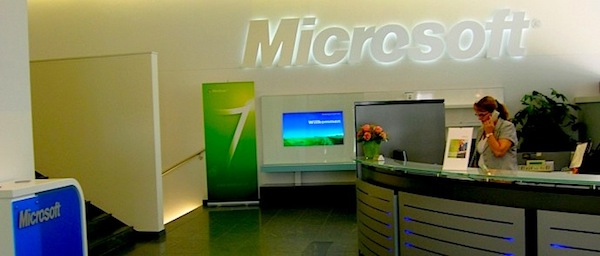Sticker Shock: Software Assurance's fourth deadly sin

Fifth in a series. Using Software Assurance, Microsoft has crafted a program that promises savings, while often costing businesses even more for software. Sometimes the higher prices are obvious, and that can hurt Microsoft's sales. Other times, it's not so obvious, such as the way Microsoft uses crazy math and a concealed license switch to raise the price on Software Assurance license renewals for larger customers.
What Assurance of Savings?
For smaller customers who tend to buy software on an ad hoc basis, and for large companies that don't purchase Office through an Enterprise Agreement (where Software Assurance payments are required), buying SA dramatically raises the price of Microsoft products.
For example, you can buy Office 2010 in a Select agreement for $505 or for $944. For $505, you get the license. For $944 you get the product and you get Software Assurance, providing a few additional benefits (which you may or may not use) and upgrade rights to the next version of the product (which you may or may not get).
For the smart buyer who has studied the complex Software Assurance benefits matrix and understands the bet, $944 may be the best option. For the buyer who doesn't understand how SA works and what it offers, the option is confusing and potentially a waste of money.
If it was simple to calculate the benefits of Software Assurance, the confusion might only be temporary. But it's not. Software Assurance is sufficiently complicated that a lot of customers employ consultants like me to help them sort out the options. When you're thinking about spending millions of dollars on SA and upgrade rights for a non-existent product, you may need some help handicapping the odds.
But the immediate issue is the high cost of Software Assurance itself. At 29 percent annually for desktop products, it is much higher than typical corporate upgrade and maintenance fees. Oracle and IBM charge in the neigborhood of 20 percent a year for upgrades and maintenance, and that includes real tech support. The tech support benefits that Microsoft offers with Software Assurance are, in comparison, pitiable.
Putting aside the question of how much tech support most desktop products need from Microsoft itself -- most corporate help desks are pretty capable at troubleshooting at least 95 percent of the questions they get -- midmarket and enterprise Microsoft customers will need a separate Premier Support agreement to handle thornier server problems and to get tech support for products that don't have Software Assurance. Add the Premier Support bill to the Software Assurance bill, and what customers get from other enterprise vendors for about 20 percent starts to look like about 35 percent at Microsoft.
Enterprise Agreement Sleight of Hand
Sometimes Software Assurance is used to conceal sticker shock. If Microsoft volume-licensing customers fought their way through the complexity of Enterprise Agreement and SA pricing, for example, they'd spot the stealth price increase in renewals of Enterprise Agreements.
To put it simply, Microsoft computes the license price (used as the basis for the 29 percent Software Assurance fee) one way in a new agreement and a different way in a renewal. The result is an increase in the price of Software Assurance by as much as 44 percent.
For example, purchasing a Windows upgrade in an new Enterprise Agreement will cost the customer with less than 2,400 computers about $78 a year. By doing some math, we can figure out that about $36 of that is the annual Software Assurance payment and the rest is for the actual upgrade license, which is about $42 a year, or $126 over the full three-year agreement.
When customers renew the agreement, they're not charged for the license anymore, because they paid for that in full in the first agreement. So in the renewal they pay only for Software Assurance, and Microsoft charges them about $52.
But wait a minute: how come Microsoft charges $36 for Software Assurance in the new agreement and $52 for SA in the renewal? Microsoft does it by a bit of sleight of hand -- rather than calculating Software Assurance as 29 percent of the $126 that the customer actually paid for the license in the Enterprise Agreement, Microsoft pretends that the customer purchased the license through a Select agreement, a different volume-licensing plan with less generous discounts. The same product in Select costs about $180, and 29 percent of $180 is $52.
Most customers see the price drop from $78 to $52 and they think they're getting an extra discount. But the complexity of EA pricing is in fact concealing a very significant price increase.
Admittedly, $16 price may not sound like a lot, but some of my clients have more than 80,000 computers. For a customer of that size, the stealth price increase generates about another $1 million a year for Microsoft. All it takes is a wave of the wand behind the customer's back to turn an Enterprise Agreement license into a Select license.
Microsoft performs similar magic on Office and CAL Suite licenses in an Enterprise Agreement renewal, although the price increases there are less dramatic, about 12 percent for Office and 5 percent for the CAL Suite.
Previous analyses in this Microsoft licensing series:
1. "Microsoft software licensing: Seven deadly sins"
2. "Software Assurance: How Microsoft gambles with your money"
3. "Microsoft's Software Assurance pressures businesses to buy before they're ready"
4. "Software Assurance math adds up for Microsoft, not as much for biz customers"
Paul DeGroot is one of the world's leading experts on Microsoft licensing policies, rules and volume licensing programs. Over a ten-year period, he developed and led the licensing practice at Directions on Microsoft, an independent analyst firm focused on understanding Microsoft policies and strategies. DeGroot formed Pica Communications, LLC, where he is principal consult, in 2010, to bring his licensing expertise to a broad range of customers worldwide. Please follow him on Twitter.